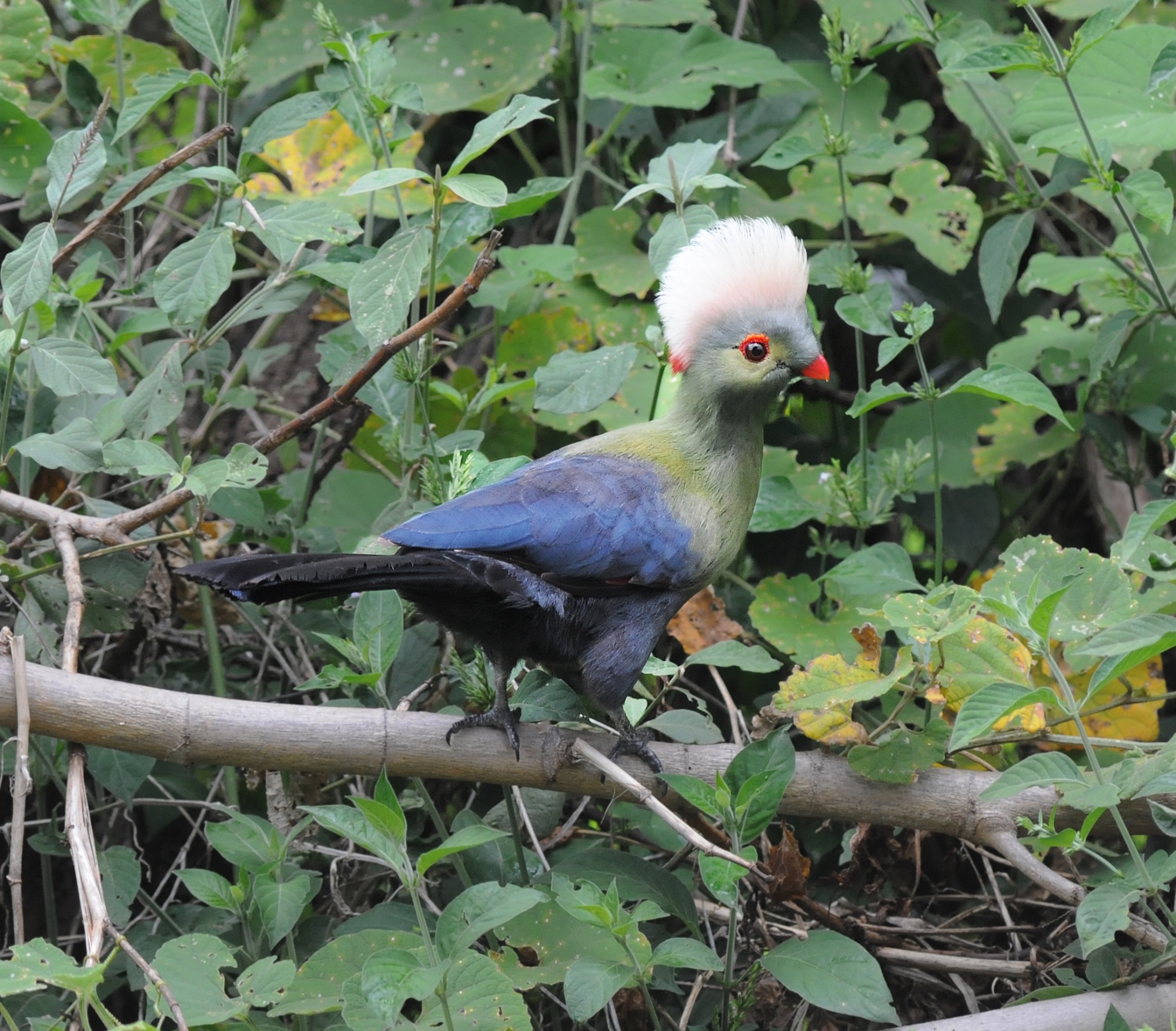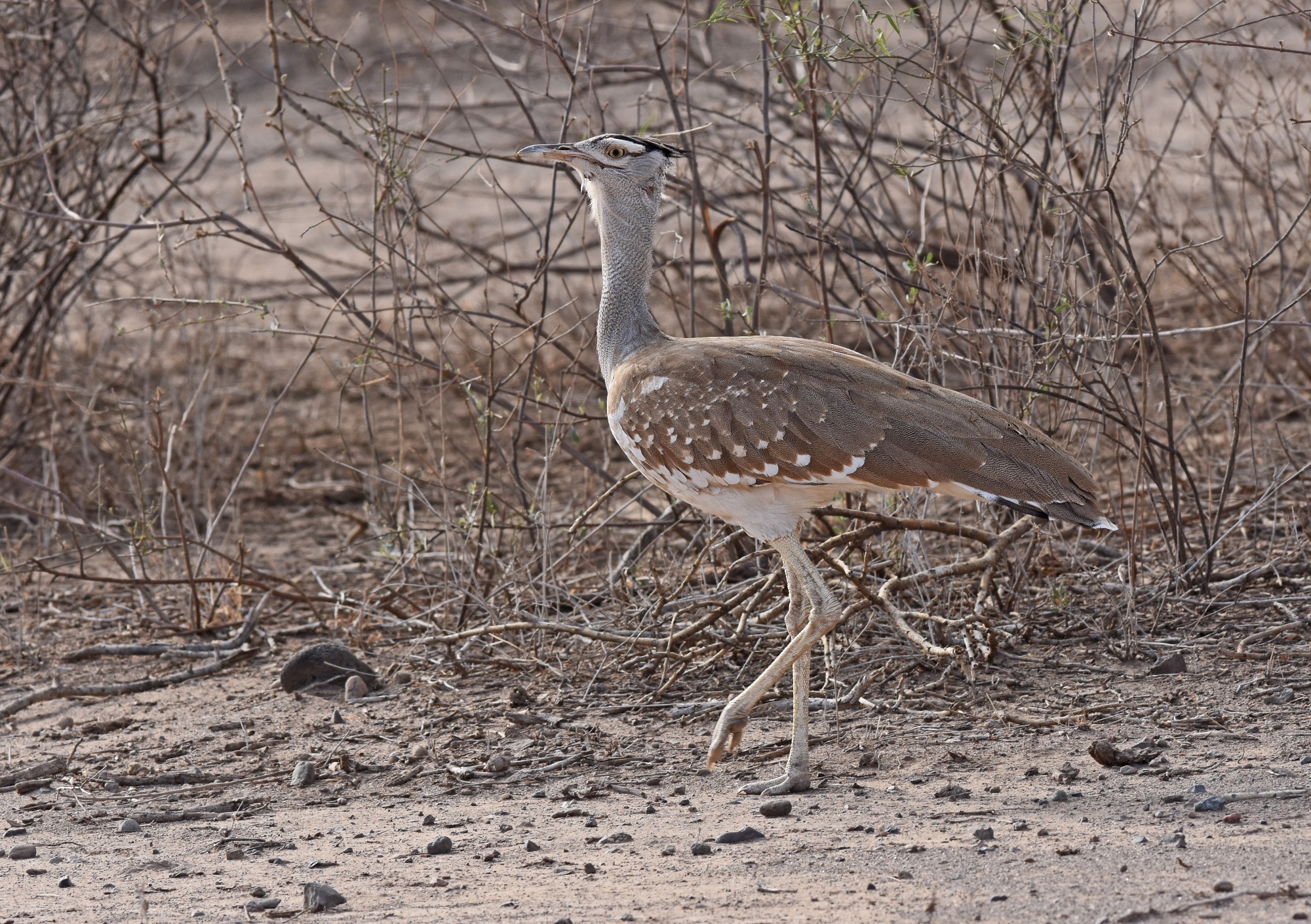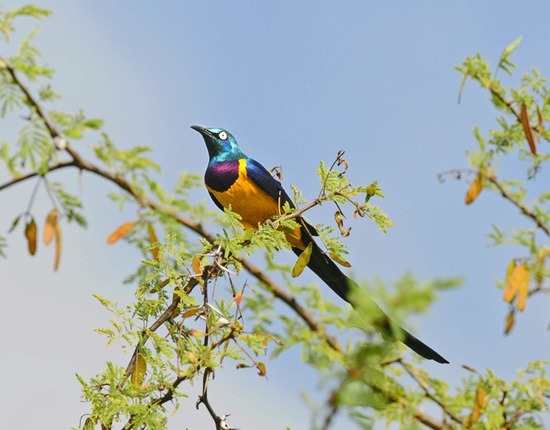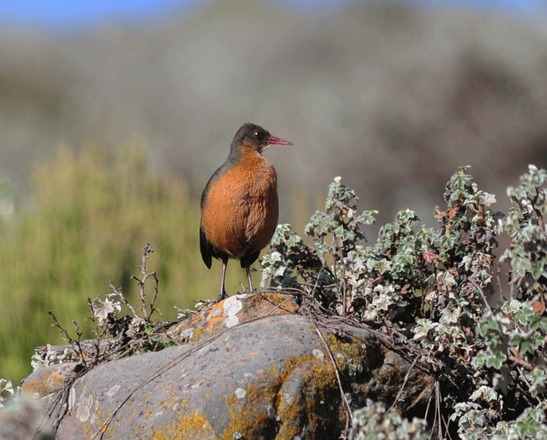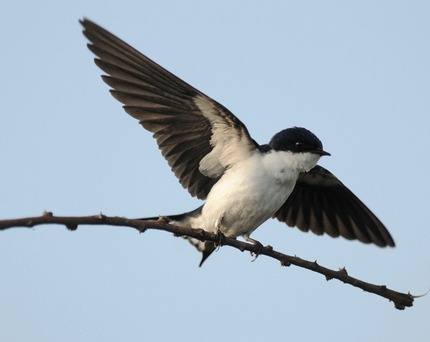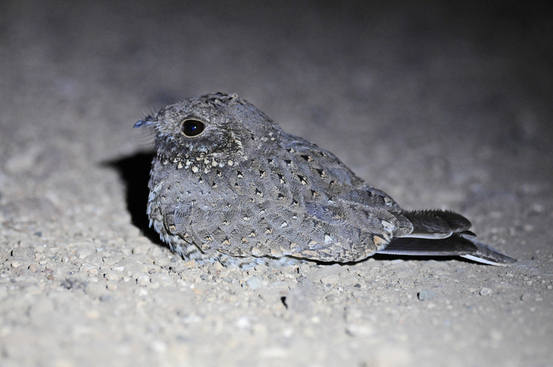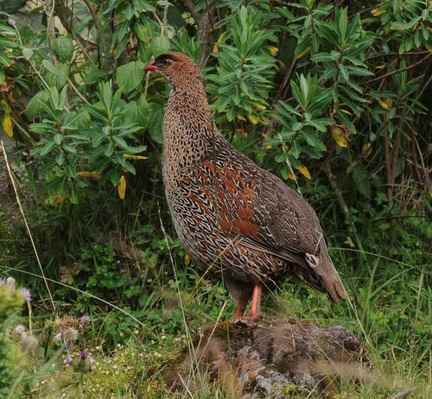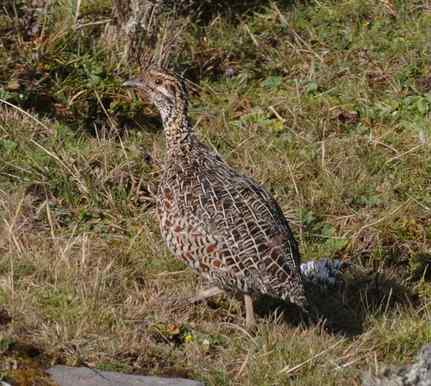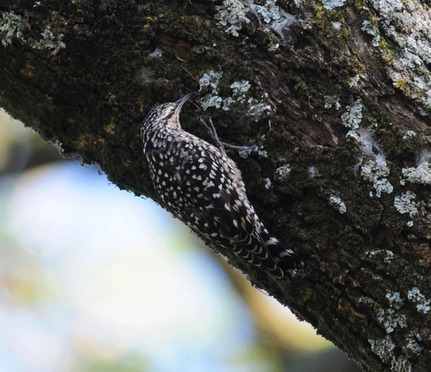ETHIOPIA - BIRDING THE ROOF OF AFRICA
DAY 1 Arrival in Addis Ababa - Solulta Plain - Debre Libanos - 25th Nov 24
Following our early morning arrival in Addis Ababa (2400m) which is located close to the Entoto Mountains we will set out on the drive to Debre Libanos and get our first taste of the amazing avifauna of Ethiopia. Common species along this route include Hooded Vulture, Yellow-billed Kite, Tacazze Sunbird, African Citril, Thick-billed Raven and Pied Crow. The road passes through fields, pastures, grassland and small marshes of the Solulta Plain where we can see our first endemics such as Blue-winged Goose, Wattled Ibis, Rouget’s Rail, White-collared Pigeon, Abyssinian Longclaw, Ethiopian Cisticola and Black-headed Siskin. By now we should be rather impressed with the sheer numbers of birds present and other goodies present along this route include Sacred Ibis, Egyptian Goose, African Black and Yellow-billed Ducks, Red-knobbed Coot, Ruppell's & Lappet-faced Vultures, Lammergeier, Three-banded and Black-winged Plovers, Dusky Turtle Dove, Nyanza Swift, Erlanger’s Lark, Short-crested Lark, Grassland and Red-throated Pipits, Banded Martin, Red- breasted, Pied, Isabelline and Abyssinian Black Wheatears, Moorland (or Alpine) Chat, Speckled Mousebird, Mountain Thrush (split from Olive), Groundscraper
Thrush, Common Fiscal, Cape Rook, Red-billed Oxpecker,
Swainson’s Sparrow, Baglafecht Weaver, Yellow Bishop, Pin-tailed Whydah, Red-collared Widowbird, Brown-rumped and Streaky Seedeaters and Common Waxbill. Our lodge is situated right on the edge of the impressive gorge at Debre Libanos and the view is outstanding! There should be some Fan-tailed Ravens here, and we can walk along the trails here in search of Erckel's Francolin, Ethiopian Boubou, Mocking and White-winged Cliff-chats, Ruppell's Robin-chat, Ruppell's Black-chat, Variable Sunbird and White-billed Starling. The nearby monastery is surrounded by good woodland where Banded Barbet, White-cheeked Turaco, Black-winged Lovebird, Abyssinian Slaty Flycatcher and Mountain Wagtail reside. Night in Debre Libanos.
DAY 2 Jemma Valley - Debre Birhan
We need to leave early this morning and head to the Jemma Valley & Aliyu Amba where we can see many lowland species alongside more typical highland birds. In particular we will look for the extremely localised Harwood's Francolin, as well as Erckel’s Francolin and have a chance of Red-billed Pytilia and Yellow-throated (White-rumped) Seedeater. Other endemics we can see today include Rüppell’s Black-chat, White-winged Cliff-chat, White-billed Starling and Abyssinian Oriole, We could also pick up Lammergeier, Dark Chanting Goshawk, Steppe,
Tawny and Verreaux’s Eagles, Fox Kestrel, African Pygmy and Half-collared Kingfishers, Abyssinian Roller, Black-billed Wood-hoopoe, Black-billed Barbet, Blue Saw-wing (split from Black), Mottled Swift, Blue-breasted Bee-eater, Hemprich’s Hornbill, Little Rock Thrush, Rüppell’s Robin-Chat, Familiar (or Red-tailed) Chat, Mocking Cliff-chat, Abyssinian White-eye, Grey-backed Fiscal, Black-crowned Tchagra, Ethiopian Boubou, Foxy, Singing and Stout Cisticolas, Montane White-eye, Northern Puffback, Fan-tailed Raven, Black-winged Red Bishop, Red-winged Starling, Village Indigobird, Pin-tailed Whydah, Cut-throat Finch, Red-billed Firefinch and Cinnamon-breasted Bunting. In the afternoon we will continue our scenic journey as we head to Debre Birhan, where we will spend the next 2 nights.
Days 3 - 4 Ankober - Melka Ghebdu - Debre Birhan
Today we will explore the impressive Ankober escarpment (3000m), which provides a truly awe-inspiring view over the Awash Plains far below. The vegetated slopes of these huge cliffs are often swathed in low coud or mist but after some searching we hope to find the endemic and range-restricted Ankober Serin. The following day we will descend to Melka Ghebdu which has proved to be a reliable site for the endemic Yellow-throated Seedeater. There will also be tons of other birds present in these areas including African Pygmy Kingfisher, Yellow-breasted and Banded Barbets, Isabelline Shrike, Abyssinian Wheatear, Grey-headed Batis, Ruppell's Weaver and many others. Once we have finished our birding on Day 5 we will drop down to the lowlands and head to our next accommodation at Awash.
DAYS 5 - 6 Fantale Crater - Awash National Park
We need to leave early to reach the lower volcanic lava flows of the extinct Fantale Crater where we can find the endemic Sombre Rock-chat. Other species here include Chestnut-headed and Chestnut-eared Sparrow-larks, Blackstart, Shining Sunbird and Striolated Bunting. The rest of our time will be spent at Awash National Park. This superb park is home to a huge variety of great birds and will explore a variety of habitats including riverine forests, wetlands, thorn woodlands, savanna grasslands, rocky hills, cliffs and escarpments. The park boasts a bird list of 460 species and we will make an effort to find, amongst many others, Somali Ostrich, Harlequin Quail, Crested Francolin, Yellow-necked Spurfowl, Helmeted Guineafowl, Small Buttonquail, Egyptian and Lappet-faced Vultures, Greater Spotted Eagle, Black-chested and Brown Snake Eagles, Bateleur, African Swallow-tailed Kite, Shikra, Pygmy Falcon, Lesser Kestrel, Kori, Arabian, Buff-crested, Hartlaub's and White-bellied Bustards, Chestnut-bellied and Lichtenstein’s Sandgrouse, Black-headed and Three-banded Plovers, Heuglin’s Courser, Senegal Thick-knee, Pearl-spotted Owlet, Plain and Slender-tailed Nightjars, African Palm Swift, Blue-naped Mousebird, Yellow-breasted Barbet, Abyssinian Scimitarbill, African Grey, Red-billed, Von der Decken’s and Eastern Yellow-billed Hornbills, Red- fronted Tinkerbird, Nubian, Bearded and Cardinal Woodpeckers, Eastern Grey Plantain-eater, White-bellied Go-away-Bird, White-browed Coucal, Star-spotted and Plain Nightjars, Northern Carmine Bee-eater, Greater Honeyguide, Ethiopian, Lesser Striped and Wire-tailed Swallows, Gillett’s and Red-winged Larks, Singing Bushlark, White-browed and Rufous-tailed Scrub Robins, Blackstart, Sombre Rock-chat, Red-backed Scrub-robin, Eastern Olivaceous Warbler, Green-backed Camaroptera, Grey-headed Batis, Pale Flycatcher, Black-crowned Tchagra, Slate-coloured Boubou, Turkestan, Steppe Grey and Lesser Grey Shrikes, Somali Fiscal, Rosy-patched and Sulphur-breasted Bush Shrikes, Red-fronted and Buff-bellied Warblers, Nile Valley, Marico, Eastern Violet-backed, Beautiful and Shining Sunbirds, Green-winged Pytilia, Crimson-rumped Waxbill, Mouse-coloured Penduline Tit, Grey-headed Batis, Fan-tailed Raven, Chestnut-backed Sparrow-lark, Red-billed Quelea, Red-rumped Waxbill, Rüppell’s and Spectacled Weavers, White-browed Sparrow-weaver, Eastern Paradise and Straw-tailed Whydahs, and both Superb and Wattled Starlings. Mammals we may see include Aardwolf, Beisa Oryx, Aardvark, Soemmering’s Gazelle, Impala, Hamadryas and Olive Baboons, Abyssinian Hare, African Wild Cat, Black-backed Jackal, Striped Hyena, Salt’s Dikdik, and Greater and Lesser Kudu, and on occasions both Lion and Leopard are found as well. We will also take a night drive to look for the more elusive nocturnal species. Nights in Awash.
DAY 7 Debre Zeit Lake - Cheleklaka Wetlands - Awassa
We will depart early and head south, dropping into the Great Rift Valley and spending the next few hours birding around Debre Zeit Crater Lake, having breakfast in a scenic spot overlooking the lake. The surrounding woodlands are alive with birds and we will look for Black Goshawk, Black-winged Lovebird, Blue-breasted Bee-eater, Black-billed Barbet, Rufous-necked Wryneck, African Yellow Warbler, Rüppell’s Robin-chat, Black-headed Batis, Beautiful Sunbird, Abyssinian White-eye and Rüppell’s Weaver. There are a number of other lakes and waterways in the vicinity such as Koka Dam, Cheleklaka Wetlands and Lake Gelila where we can search for Pink-backed and Great White Pelicans, Goliath Heron, Black Crowned Crane, Intermediate Egret, Hadada Ibis, African Darter, Hamerkop, Yellow-billed and Saddle-billed Storks, Spur-winged and Egyptian Geese, Maccoa & Comb Ducks, African Pygmy-goose, African Swamphen, Allen’s Gallinule, Long-crested Eagle, Banded Snake-eagle, African Fish-eagle, African and Lesser Jacanas, Senegal Thick-knee, Spur-winged Lapwing, Blue-spotted Wood-dove, Bruce’s Green-pigeon, Blue-headed Coucal, Double-toothed Barbet, Giant, Woodland, Grey-headed and Malachite Kingfishers, Grey-backed Fiscal, White-browed Robin-chat, Common Waxbill, Violet-backed Starling and Bronze Mannikin. After lunch we will pay a visit to Lake Ziway where you can get very close to numerous herons, egrets, storks and pelicans which provide amazing photo opportunities. This area also holds Lesser Moorhen, Hemprich's Hornbill, Malachite and Woodland Kingfishers, Klaas's Cuckoo, Red-faced Crombec, Black-headed Batis, White-browed Sparrow-weaver and Ruppell's Starling. The drive to our lodge at Awassa passes through some savannah and acacia woodland where Abyssinian Ground Hornbill, Von Der Decken's and Northern Red-billed Hornbills, Rufous-crowned Roller and Northern White-crowned Shrike can be seen. Night in Awassa.
DAY 8 Awassa - Goba - Bale Mountains NP
We will spend several hours birding the large gardens as well as scanning the huge lake right next to the lodge this morning and we should pick up a wide variety of birds. in particular we will look for Spotted Creeper, whilst other birds in the garden include African Mourning Dove, African Grey Woodpecker, Blue-headed Coucal, Green Wood-hoopoe, Silvery-cheeked Hornbill, Red-shouldered Cuckoo-shrike, Red-throated Wryneck, Brown-throated Wattle-eye, African Thrush, Northern Puffback, Winding Cisticola, Tacazze, Scarlet-chested, Beautiful and Shining Sunbirds, White-rumped Babbler and Little Weaver. Out on the lake you can sometimes find African Pygmy Goose, as well as White-backed Duck and other waterbirds. Reedbeds in the vicinity support Greater Painted-snipe, Purple Swamphen, Black Crake, Red-faced Cisticola, Little Rush and Lesser Swamp Warblers, Grosbeak Weaver and Abyssinian (split from Fawn-breasted) Waxbill. The nearby fish market can surprisingly offer excellent photographic opportunities as numerous species fight for scraps from the local fisherman and it is possible to get up close and personal to such delights as Marabou Storks, Eastern White Pelicans, Grey-headed Gulls and others. Other nearby sites hold Goliath Heron, Banded Barbet, Nubian Woodpecker, Broad-billed Roller, Buff-bellied Warbler and Rufous Chatterer. Later we will head towards the Bale Mountains National Park, stopping along the way to look for Cape Eagle-Owl, Pallid Harrier, Augur Buzzard, Buffy Pipit, Thekla Lark, the endemic Abyssinian Longclaw, African Stonechat, Fan-tailed Widowbird and Yellow-crowned Canary. There should also be opportunities to see the endemics: Blue-winged Goose, Wattled Ibis, Rouget's Rail and Chestnut-naped Francolin.
At the park headquarters in Dinsho we will search for African Wood Owl, Abyssinian Owl, Black-winged Lapwing, Groundscraper Thrush (endemic race simensis), Abyssinian Ground-thrush, Abyssinian Catbird, White-backed Black Tit, and Abyssinian Siskin. We also hope to see a variety of mammals including Mountain Nyala, Menelik’s Bushbuck and Desert Warthog. Night in Goba.
DAY 9 Bale Mountains - Sanetti Plateau
We have two full days to explore this fascinating area beginning with a thoroughly exciting journey up onto the Sanetti Plateau, and we shall spend most of this day at an altitude between 3800m and 4377m (Tullu Deemtu). As we ascend we will enter a Tid or Juniper forest zone, and here we will search for African Goshawk, Rufous-chested Sparrowhawk, African Hill Babbler, the very-localised Abyssinian Woodpecker, Cinnamon Bracken-warbler, Ruppell's Robin-chat, Broad-ringed White-eye and Yellow-bellied Waxbill. We have even seen Yellow-fronted Parrot in this area as well. Once we reach this unique plateau we will be driving on Africa’s highest road and it is this Afro-alpine moorland that is home to fourteen of Ethiopia’s highland specialities. The main prize, and always hard to find, are the endangered Wattled Cranes and we will spend quite a while trying to locate them. Other species here include Black Stork, Wattled Ibis, Steppe and Golden Eagles, Pallid Harrier, African Snipe, Lammergeier, Chestnut-naped and Moorland Francolins, the endemic Rouget's Rail and Spot-breasted Plover, African Olive Pigeon, Abyssinian Woodpecker, Red-throated Pipit, Red-breasted Wheatear, Moorland Chat, Abyssinian Slaty Flycatcher, Cinnamon Bracken and Brown Woodland Warblers, White-backed Black-tit, Slender-billed Starling, Ethiopian Siskin, Yellow-crowned Canary and Yellow-bellied Waxbill. The plateau's most celebrated resident is the rare Simien Wolf, whilst other animals here include Giant Root Rat, Klipspringer, Bush Duiker, Bohor Reedbuck and the endemic Starck’s Hare. Eventually we will reach an escarpment that will lead us down to the vast Harenna Forest which still supports populations of Lion and the only surviving forest-dwelling African Wild Dogs. Here, we will search for Ayres’s Hawk-eagle, Lemon and Tambourine Doves, Rameron Pigeon, African Emerald Cuckoo, Narina Trogon, African Dusky Flycatcher, African Hill-babbler, Green-backed Honeybird, Red-faced Cisticola, Brown Woodland-warbler, Olive Sunbird, Bale Parisoma (split from Brown), Abyssinian Crimsonwing, Sharpe’s Starling, African Citril, Yellow-bellied Waxbill, and Cape Canary. In the afternoon, we will return across the Sanetti Plateau to Goba. Hopefully there will be some stake-outs for African Wood-owl, Abyssinian Owl and Abyssinian Nightjar.
Our next day in this amazing area will see us descend 1600m to enjoy some dry warmth in the Sof Omar region. The habitat here consists of broad-leafed and Acacia woodlands where our main target bird is the extremely range-restricted Salvadori’s Seedeater. Other target birds include Crested Francolin, D'Arnaud’s Barbet, Somali Crow, Northern Brownbul, Somali Tit, the localised Brown-tailed Rock-chat, Yellow-breasted Apalis (this form likely to be split as Brown-tailed Apalis), White-crested Helmetshrike, Rosy-patched Bushshrike and Bristle-crowned Starling. Other likely species include, African Hawk-eagle, Vinaceous, Ring-necked and Namaqua Doves, Emerald-spotted Wood-dove, Orange-bellied Parrot, Speckled Mousebird, White-bellied Go-away-bird, Black-billed Woodhoopoe, Von der Decken’s and Red-billed Hornbills, Black-throated Barbet, Cardinal and Nubian Woodpeckers, Greater Honeyguide, Grey Wren-warbler, Northern Crombec, Pygmy Batis, Kenya Violet-backed Sunbird, Brubru, Slate-coloured Boubou, Grey-headed and Orange-breasted Bush-shrikes, White (Bushy-crested) Helmetshrike, Superb Starling, White-headed Buffalo-weaver, Speke's Weaver, the local subspecies of Red-headed Weaver, Eastern Paradise-whydah, Straw-tailed Whydah, Village Indigobird, Red-cheeked Cordonbleu, Crimson-rumped Waxbill, Cut-throat, Purple Grenadier and Reichard’s Seedeater. Nights in Goba.
DAY 10 Goba - Negele
Today we depart early, heading for progressively drier thorn savanna in the remote south of Ethiopia. Our route will take us over the Sanetti Plateau again and down through Harenna Forest, giving us another opportunity to search for any species we still need here, with species such as Ayre's Hawk-eagle, Brown Saw-wing (antinorii race of Black Saw-wing), Dark-headed Oriole, Abyssinian Slaty-flycatcher, Grey Cuckooshrike, African Stonechat, Ethiopian Cisticola, Cinnamon Bracken Warbler, Brown Woodland Warbler, Slender-billed Starling, Black-and-white Mannikin, and the Bale race of Brown Parisoma - a potential full species. We have a long drive today but it's birding all the way as the countryside gets more and more arid. We will be on the lookout for a wide variety of new species and possibilities include Baleleur, Bruce's Green-Pigeon, Levaillant's Cuckoo, Double-toothed, Red-fronted & Black-billed Barbets, Red-and-yellow Barbet, Northern Black Flycatcher, Slate-coloured Boubou, Eastern Paradise-Whydah, Straw-tailed Whydah, Vitelline Masked & Chestnut Weavers, White-headed Buffalo-weaver, Shelley's Starling, Red-billed Quelea and many others. Finally, we will reach a dry wadi on the Genale River, which is home to Ethiopia’s most sought-after endemic, the beautiful Prince Ruspoli's Turaco.
DAYS 11 - 12 Liben Plains
Early the next morning we will set out to the nearby Liben Plains, a vast area of open grassland and home to the extremely localised and skulking Archer's Lark (formerly called Sidamo Lark), for which we will have to work very hard to locate as this is one of Africa's rarest birds. We could also find Kori and Black-bellied Bustards, Black-winged Plover and the range-restricted Somali Short-toed Lark. If we are very fortunate, we may see coveys of Coqui Francolins or flush a migratory Corncrake. The surrounding dry woodland and thorn savanna support Bateleur, Tawny Eagle, African Harrier-hawk, Eastern Chanting-goshawk, Gabar Goshawk, Pearl-spotted Owlet, Abyssinian Roller, Abyssinian Scimitarbill, Eastern Yellow-billed Hornbill, Greater Honeyguide, Red-and-yellow Barbet, the rare and enigmatic Gillett’s Lark, Ethiopian Swallow, Dodson's Bulbul, Spotted Mourning Thrush, Rufous-tailed Rock-thrush, Boran and Ashy Cisticolas, Plain-backed and sometimes Golden Pipit, Pallid Flycatcher, Mouse-coloured Penduline-tit, Grey-headed Bushshrike, Slate-coloured Boubou, Taita Fiscal, Northern White-crowned Shrike, Yellow-bellied Eremomela, Golden-breasted, Shelley's and White-crowned Starlings, Somali Crow, Grey-capped Social-Weaver, Speke’s Weaver, Somali Golden-breasted Bunting, Reichenow's Seedeater and Northern Grosbeak-canary. There is a seasonal lake here which, if it still has some water, holds Abdim's Stork, African Openbill and a good selection of waders.
We have an extra day in this area which will see us driving beyond the Liben Plains to look for the endemic Salvadori's Seedeater at a relatively new site. There are, of course, further chances to look for Archer's Lark, whilst other species in the area include Black-headed Oriole, Red-and-yellow Barbet, Boran Cisticola, Foxy Lark, Shelley's Starling, Shelley's Sparrow and Purple Grenadier. Nights in Negele.
DAYS 13 - 14 Negele - Yabello
Today is another long drive as we travel further south to Yabello, an area close to the Kenyan border. This is a fantastic drive as there are just so many birds to stop and see and along the way will look for Yellow-necked Spurfowl, Black-chested Snake-Eagle, Grasshopper Buzzard, Grey Kestrel, Pygmy Falcon, Somali Coursers, Diederik Cuckoo, the extremely-localised African White-winged Dove, Cardinal Woodpecker, Lilac-breasted Roller, Striped Kingfisher, African Golden Oriole, Brubru, Somali Short-billed Crombec, Somali Fiscal, Grey Wren-Warbler, Abyssinian Scimitarbill, Hunter's Sunbird, Golden-breasted and Shelley's Starling and Yellow-spotted Petronia. At the Dawa River we can search for Juba Weaver in the dense acacia forest here, whilst we can also see D'Arnaud's Barbet, White-browed Scrub-robin, African Pied Wagtail, Yellow-breasted Apalis, Pygmy Batis, Violet-backed Sunbird, Somali Bunting and Purple Grenadier. However, when we get closer to Yabello we will spend most of our time in search of two of Ethiopia’s most sought-after endemics: Stresemann's Bush Crow and White-tailed Swallow. This area also holds Somali Ostrich, Vulturine Guineafowl, Chestnut-bellied Sandgrouse, White-bellied Bustard and Black-capped Social-Weaver.
We can then spend a full day exploring the bird-rich bush-country for a whole host of exciting species such as Coqui Francolin, Black-fronted Francolin (split from Chestnut-naped Francolin), Buff-crested Bustard, Gabar Goshawk, Pygmy Falcon, Black-faced and Lichtenstein's Sandgrouse, Bare-faced Go-away-bird, African Orange-bellied Parrot, Red-fronted, Black-throated and Red-and-yellow Barbets, Mottled Swift, Blue-naped Mousebird, Rufous-crowned and Lilac-breasted Rollers, Foxy, Fawn-coloured and Short-tailed Larks, Pale Prinia, Pringle's Puffback, Taita Fiscal, Three-streaked Tchagra, Red-naped Bush-shrike, Pygmy Batis, Yellow-vented Eremomela, Spotted Morning-Thrush, Bare-eyed Thrush, Boran, Croaking, Tiny and Ashy Cisticolas, Red-fronted Warbler, Northern Grey Tit, Magpie Starling, Banded Parisoma, Black-breasted Apalis, Hunter's and Shining Sunbirds, Golden-breasted, Superb and Wattled Starlings, Yellow-spotted Petronia, Chestnut Sparrow, Lesser Masked, Vitelline and Speke's Weavers, Grey-capped and Black-capped Social-weavers, Chestnut Weaver, Black-cheeked Waxbill, Somali Bunting, Purple Grenadier, Green-winged Pytilia and both Northern Grosbeak and White-bellied Canary. As dusk settles we can look for Verreaux's Eagle-Owl, African Scops-owl and Freckled & Donaldson-Smith's Nightjars. Nights in Yabello.
DAYS 15 -16 Yabello - Lake Langano - Bishan Gari
Today we will enjoy some early morning birding in the Yabello Wildlife Sanctuary before making our way back towards Addis Ababa. We will search for Blue-breasted Bee-eater, Fawn-coloured Lark, Bare-eyed Thrush, Banded Parisoma, Somali Long-billed Crombec, Grey Flycatcher, Winding Cisticola, Yellow Bishop, and Red-collared and White-winged Widowbirds along the way. In the late afternoon we will arrive at the superb Bishan Gari Lodge on the southern shore of Lake Langano for a two-night stay. Excellent birding can be found around the lush vegetation of the three neighbouring lakes in the central Ethiopian Rift Valley and we will spend a full day exploring the shores and surrounding woodland. Initially we will concentrate on finding Yellow-fronted Parrot which often perch in the large trees right in front of the lodge. Then we can walk the trails through great habitat in search of Scaly Francolin, Tambourine Dove, Narina Trogon, Scaly-throated Honeyguide, Abyssinian Ground Thrush, Red-capped Robin-chat, and Green Twinspot. We hope to find Somali Ostrich, huge flocks of Greater and Lesser Flamingos, Black, Goliath, Squacco and Purple Herons, Spur-winged Goose, African Pygmy-goose, Fulvous & White-faced Whistling-ducks, Southern Pochard, Hottentot and Cape Teals, Black Crake, African Fish-eagle, Dark Chanting Goshawk, Ayres’s Hawk-eagle, Imperial and Long-crested Eagles, African Harrier-hawk, Grey Kestrel, Kittlitz's Plover, Great Black-headed Gull, Blue-spotted Wood Dove, Lemon Dove, Northern Carmine and Little Bee-eaters, Malachite Kingfisher, Hemprich’s Hornbill, Abyssinian Ground-hornbill, Grey Woodpecker, Double-toothed Barbet, Lesser Honeyguide, Eastern Honeybird, Red-shouldered Cuckooshrike, Grey-backed Fiscal, Grassveld Pipit, Isabelline, Pied and Schalow’s Wheatears, Little Rock-thrush, Grey Cuckoo-shrike, African Thrush, Buff-bellied Warbler, Red-faced Crombec, Rüppell’s Long-tailed Starling, Red-billed Oxpecker, Black-and-white Mannikin and Red-billed Firefinch. The endemic and extraordinary-looking Thick-billed Raven is common here. Mammals we may see include Grant's Gazelle, Oribi, Guereza Colobus Monkey, White-tailed Mongoose and Spotted Hyena. In the evening we will look for Greyish and Verreaux’s Eagle-owls, African Wood Owl, African Scops-owl, Northern White-faced Owl and both Slender-tailed and Freckled Nightjars around the hotel. Nights at Bishan Gari.
Day 17 Lake Abiata - Rift Valley Lakes - Wolliso
An early morning visit to Lake Abiata is one of the highlights of the tour and provides one of the most memorable sights of the tour with literally thousands of Lesser Flamingo's present. Smaller numbers of Greater Flamingo's are also here, along with thousands of palearctic waders, Kittlitz's Plover, African Spoonbill, Marabou Stork, Sacred Ibis, African Fish-Eagle, and many other species. There are usually flocks of Common Cranes present and if we are lucky there are sometines a few Wattled Cranes here as well. Large flocks of Yellow Wagtails congregate on the short-cropped grassland and we can usually see a few Grassland Pipits as well. The Acacia woodland is home to Bearded Woodpecker, Black-billed Wood-hoopoe, Black Scimitarbill, White-winged Black Tit, Mouse-coloured Penduline-Tit, Buff-bellied Warbler and Cinnamon-breasted Bunting. In the afternoon we will drive across the hills to Wolliso. Night in Wolliso.
DAY 18 Gibe Gorge - Addis Ababa - 12th December 2024
This morning we can search Gibe Gorge, which has been the best site for endemic Red-billed Pytilia, the near-endemic Yellow-rumped Seedeater, along with Yellow-throated Sandgrouse, African Wattled Plover, both Bar-breasted and Black-faced Firefinches, and there's also a slim chance of Egyptian Plover. In the afternoon we will return to Addis Ababa, where we have use of day rooms this evening and after dinner will transfer to the airport for out late evening flight back to the UK and conclusion of an exciting African adventure.

